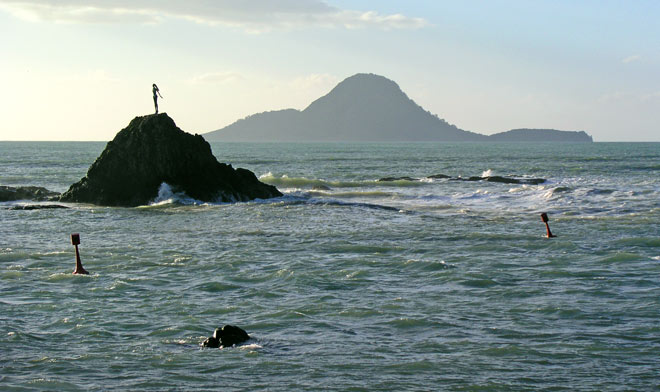
In the foreground of this photograph is the rock Turuturu-Roimata, which is just off the coast from the landing place of the Mataatua canoe. The statue on top of the rock depicts Wairaka, the daughter of Toroa, captain of the canoe. When the canoe started drifting back out to sea she is said to have saved it by grabbing a paddle and crying out ‘Kia whakatāne au i ahau!’ (I will act like a man). This incident is said to be the origin of Whakatāne’s name. The island in the distance is Moutohorā (Whale Island), a volcanic island nine kilometres offshore, where Ngāti Awa traditionally collected tītī (muttonbirds). Moutohorā is now a wildlife refuge.
Using this item
Te Ara – The Encyclopedia of New Zealand
Photograph by Peter Hodsell
This item has been provided for private study purposes (such as school projects, family and local history research) and any published reproduction (print or electronic) may infringe copyright law. It is the responsibility of the user of any material to obtain clearance from the copyright holder.







Add new comment